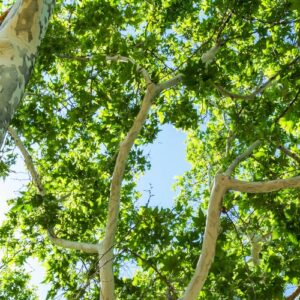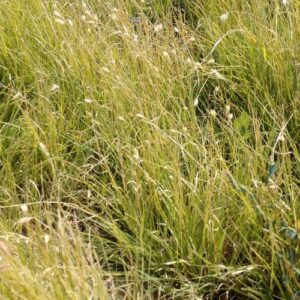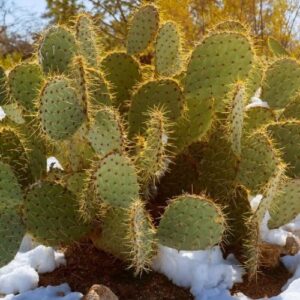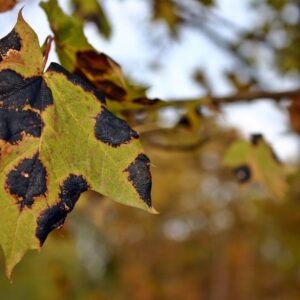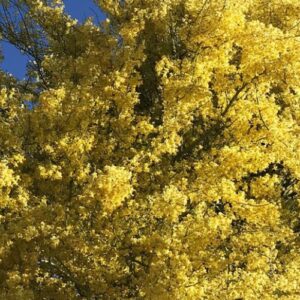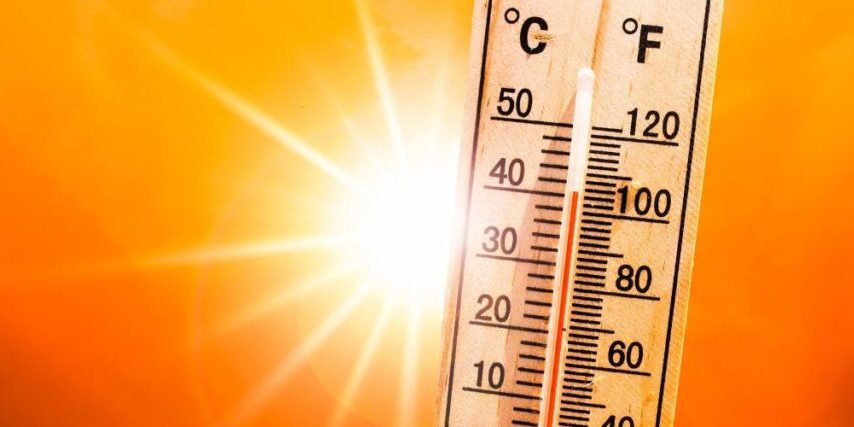
With temperatures already soaring above 115°F for weeks and August’s peak heat still ahead, July in Arizona means we’re only halfway through the brutal summer season – and your trees are feeling it.
However, it’s not too late to protect your Phoenix property from the worst heat yet to come. From selecting heat-tolerant native species to protecting trunks from sunscald, these five strategies will help your trees survive – and even thrive – through the harshest stretch of Phoenix’s extreme summer heat.
Key Takeaways
- Heat-tolerant native species naturally withstand extreme Phoenix temperatures with minimal intervention when properly established.
- Strategic watering adjustments during heat waves can mean the difference between tree survival and costly tree loss.
- Trunk and root protection prevents the most common heat-related damage that kills trees in Phoenix summers.
- Early heat stress detection allows for rapid intervention before permanent damage occurs
- Timing protection measures around Phoenix’s heat patterns maximizes effectiveness while minimizing tree stress.
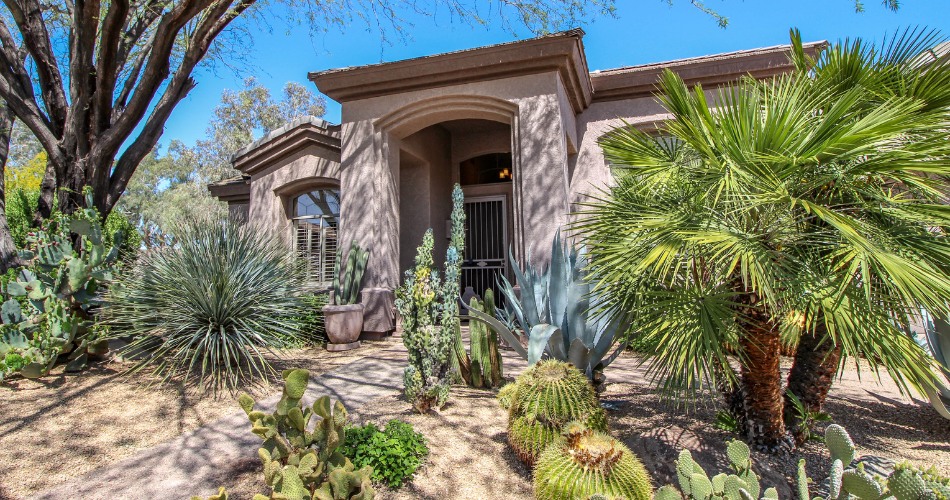
1. Choose Heat-Tolerant Native Species
The foundation of any successful heat protection strategy starts with selecting the right trees for our unique desert environment. Native and desert-adapted species have evolved survival mechanisms that help them endure temperatures above 115°F, but even these tough species need proper care during heat waves.
Top Heat-Tolerant Trees for North Phoenix Homes
- Blue Palo Verde (Cercidium floridum): Arizona’s state tree, this species is the ultimate heat survivor thanks to its green bark that photosynthesizes even when leaves drop during extreme heat. It requires virtually no supplemental water once established and can survive temperatures well above 120°F.
- Foothill Palo Verde (Parkinsonia microphylla): Smaller than its cousin, the foothill palo verde is equally tough. They produce yellow blooms in the spring and their excellent drought tolerance make it perfect for areas with minimal irrigation. These trees can even handle heat reflected from pavement and walls.
- Velvet Mesquite (Prosopis velutina): An Arizona native with deep taproot systems, these trees access groundwater others can’t reach, and once mature, they provide excellent shade. While extremely heat-tolerant, velvet mesquites do benefit from occasional deep watering during extended heat waves above 110°F.
- Desert Willow (Chilopsis linearis): This species is a deciduous native that conserves energy by dropping leaves during extreme heat, then rebounds quickly when temperatures moderate. They produce beautiful trumpet flowers even in harsh conditions.
- Chilean Mesquite (Prosopis chilensis): Fast-growing and heat-tolerant, Chilean mesquites require slightly more water than native mesquites. They are, however, a good choice for quick heat protection establishment.
- Desert Museum Palo Verde (Parkinsonia ‘Desert Museum’): A thornless variety popular for residential landscapes, the desert museum palo verde handles extreme heat well with minimal care.
Remember, even our toughest native trees can struggle during unprecedented heat waves. Monitor these species – and all trees – for signs of stress like premature leaf drop, wilting during cooler morning hours, or bark splitting. Supplement with deep watering every 2-3 weeks during extreme heat periods above 115°F.
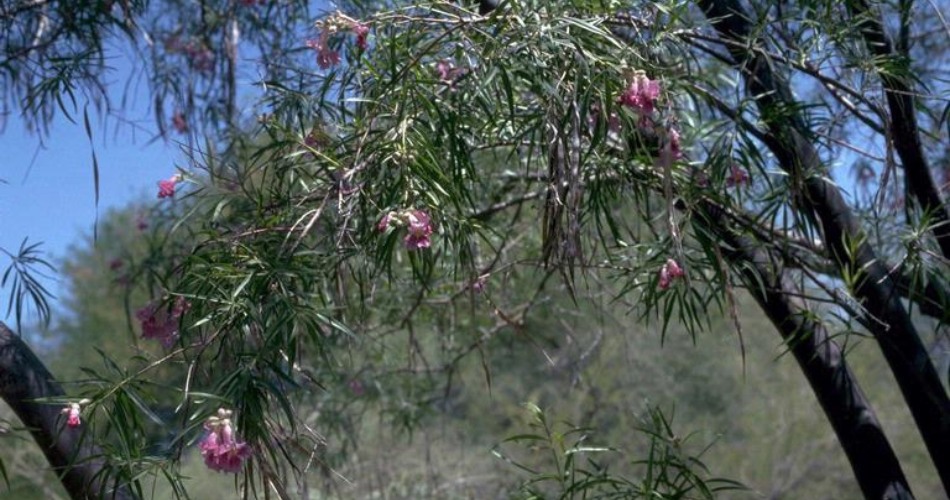
A closeup of pink flowers on a desert willow courtesy of Howard F. Schwartz, Colorado State University, Bugwood.org.
2. Master Watering Techniques During Extreme Heat Warnings
To protect trees from Phoenix heat, proper summer watering becomes absolutely critical. However, more water isn’t always the solution, as timing, method, and frequency matter more than quantity during extreme heat events.
- Water Deeply & Slowly: Water deeply every 7-10 days during sustained temperatures above 115°F, compared to the normal 14-day cycle. Use drip irrigation or soaker hoses to ensure water reaches the root zone without evaporating.
- Respond Quickly to Stress: Trees showing heat stress need immediate deep watering, regardless of your normal schedule. Water until soil is saturated 18-24 inches deep around the entire drip line.
- Water at the Right Time: Ideally, water between 4 AM and 7 AM during heat waves to minimize evaporation and give trees maximum time to absorb moisture before peak heat hits. Never water during afternoon heat as it can actually stress trees more.
- Increase Frequency for Young Trees: Trees under 3 years old haven’t developed deep root systems and need water every 3-5 days during extreme heat. Check soil moisture 6 inches deep daily during heat waves.
- Check Moisture Below the Surface: Phoenix soil can appear wet on top while being bone dry at root level. Check moisture 12-18 inches deep before deciding whether to water or not. Overwatering during heat can be as deadly as underwatering.
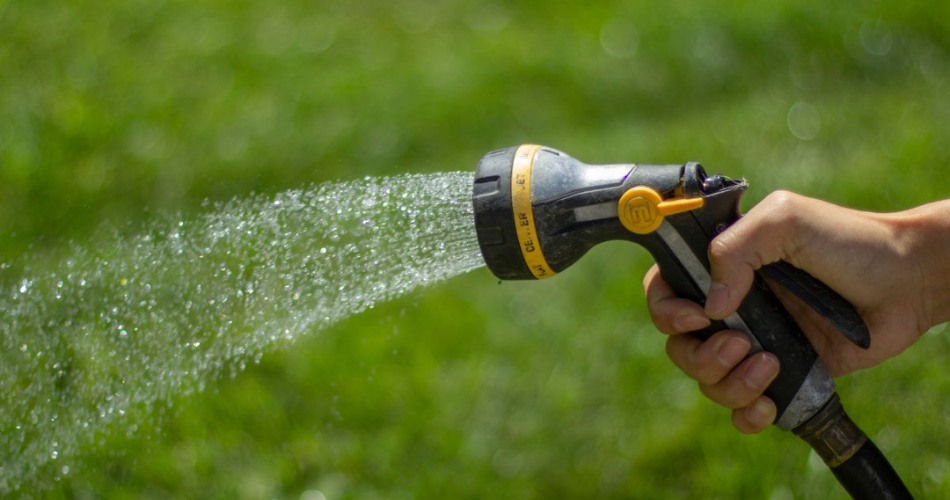
3. Protect from Sunscald
Phoenix’s intense UV radiation and reflected heat can literally cook tree bark, creating entry points for pests and diseases that finish what the heat started. Here’s how to protect tree trunks against extreme heat:
- Use White Trunk Paint: Paint trunks of vulnerable species (especially citrus and young trees) with white latex paint or commercial trunk paint. This reflects heat and can drastically reduce bark temperature by several degrees.
- Focus on Southwest Exposure: The southwest side of tree trunks receive the most intense afternoon heat and UV. Pay special attention to protecting this area on all trees, regardless of species.
- Install Shade Cloth: Install 30-50% shade cloth around newly planted trees during their first two summers. Position it to block afternoon sun while still allowing morning light.
- Provide Temporary Shade Structures: Use patio umbrellas, shade sails, or temporary structures to protect valuable trees during extreme heat events. Even 2-3 days of protection during 118°F+ temperatures can prevent permanent damage.
4. Keep Tree Roots Cool
In Phoenix, it’s not just the sun beating down from above, it’s also the rock mulch and gravel holding heat well after the sun goes down. To protect your trees, start by addressing what’s covering the soil beneath them:
- Remove Heat-Absorbing Materials: Pull dark rocks, gravel, and decorative stone away from tree bases during heat waves. These materials can reach temperatures of 160°F+ and literally bake tree roots.
- Install Reflective Mulch: Keep 4-6 inches of light-colored organic mulch around the trunk base to insulate roots and reflect ground heat away from the root zone. This can reduce soil temperature by 20-30 degrees compared to bare ground.
- Expand Protection Zones: During extreme heat, extend mulching and ground protection to the full drip line of the tree, not just the base. Roots extend far beyond the trunk.
5. Monitor and Respond to Heat Stress Emergencies
Early detection of heat stress allows for emergency intervention that can save trees from permanent damage or death during Phoenix’s most brutal weather.
Critical Heat Stress Warning Signs
- Morning Wilting: If leaves are wilted during cool morning hours (before 8 AM), the tree is in severe heat stress and needs immediate deep watering.
- Rapid Leaf Drop: Sudden loss of green leaves (not normal seasonal drop) indicates the tree is sacrificing foliage to survive. Begin emergency watering protocol immediately.
- Bark Splitting or Peeling: Heat-damaged bark appears as vertical cracks or peeling areas, usually on south/southwest-facing sides.
- Branch Dieback: Branch tips turning brown or black during extreme heat means the tree is abandoning parts of itself to survive.
Emergency Response Protocol
- Provide Immediate Deep Watering: Begin deep watering cycle immediately when heat stress symptoms appear, regardless of normal watering schedule.
- Install Emergency Shade: Set up temporary shade structures within 24 hours of detecting severe heat stress symptoms. Even partial shade helps.
- Schedule Professional Assessment: If symptoms persist after emergency measures have been taken, contact a Certified Arborist immediately. Heat-stressed trees are vulnerable to rapid decline and death.
Frequently Asked Questions About How to Protect Trees from Extreme Heat
What temperature is too hot for trees in Phoenix?
Most trees begin experiencing stress above 115°F, with severe stress occurring above 118°F. Even heat-adapted natives may need intervention during sustained temperatures above 120°F.
How can I tell if my tree is dying from heat?
Watch for morning wilting, rapid green leaf drop, bark splitting, and branch dieback. Trees in severe heat stress often look wilted even during cooler evening hours.
Should I water trees more during heat waves?
Yes, but water deeper rather than more frequently. During sustained 115°F+ heat, water every 7-10 days instead of the normal 14-day cycle, ensuring water reaches 18-24 inches deep.
When should I call an arborist during extreme heat?
Call immediately if trees show morning wilting, rapid leaf drop, or bark damage during heat waves. Heat-stressed trees can decline rapidly but can still be saved with quick intervention.
For the Best Heat Protection for Phoenix Trees, Trust Titan Tree Care
Adequately protecting your trees from extreme heat requires an understanding of Phoenix’s unique climate challenges and the act of working with nature rather than against it.
At Titan Tree Care, we understand the specific challenges of creating effective heat protection in North Phoenix’s extreme climate. Our Certified Arborists can assess your property, recommend the ideal strategies for your specific situation, and ensure your trees are positioned for long-term success.
Don’t wait until next summer – call us today at 623-444-8448 to start protecting your trees and creating a cooler, healthier landscape.
See Our Latest Articles
More Articles Like This

Titan Tree Care is a full-service tree care company located in Anthem, AZ and serving all of North Phoenix. We offer a wide range of services to meet your tree care needs, including tree and palm trimming, tree pruning, tree removal, stump grinding, and more. We also offer insect or disease treatments and fertilization services. We are dedicated to providing high-quality, safe, and effective tree care services to our customers and work hard to ensure that your trees are healthy and look their best.



